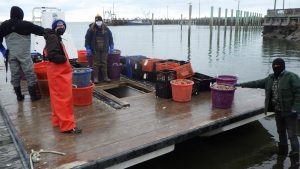Search results for: VIPREG2024 1xbet free promo code 2024 El Salvador
From the Director
WHOI Sea Grant relies on input from a variety of sources to determine the most pressing marine and coastal environmental issues facing our region. Key among them is our Marine Outreach Guidance Group (MOGG) – an advisory board that includes representatives from academia, industry, tribes, education, media, and …
Read MoreMassachusetts Sea Grant Fellows Focus in on Blue Crabs and Coastal Jellyfish
MIT Sea Grant and WHOI Sea Grant jointly announce two new Massachusetts Sea Grant Graduate Research Fellows In 2021, MIT Sea Grant and Woods Hole Oceanographic Institution (WHOI) Sea Grant announced a new fellowship program to support Massachusetts graduate students engaging in coastal and marine research. MIT Sea Grant and WHOI Sea Grant are welcoming…
Read MoreCultivating the Future of Shellfish Farming
On a perfect mid-August afternoon, Todd Gelinas and Adrian Wallace motor their work skiff back to a small beach at the end of Tonset Road in Orleans. Newly-minted business partners, they are returning from tending oysters at Stony Island Farm …
Read MoreState of Wellfleet Harbor Conference Planned
The annual State of Wellfleet Harbor Conference opens this Saturday, November 6 from 10-11:15 a.m., the first of three live Saturday webinars this month. The conference is free and all are welcome. Woods Hole Sea Grant Fisheries and Aquaculture Specialist Abigail Archer is a moderator for the conference. This Saturday, Owen Nichols with the Center…
Read More



